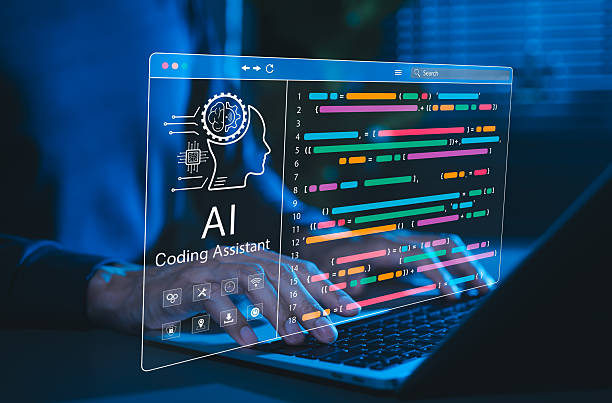
Artificial intelligence is increasingly infusing the current business landscape and also makes people’s lives easier because the world is currently following the advanced software development technique to align with the competitive market. Moreover, AI code generators are considered the biggest support of change for enhancing productivity, workflows and accelerating the software development cycle. According to current research, 92% of US-based developers use AI coding tools both inside and outside of work. However, this technology might undergo the proper examination with potential risk factors. This article will examine the potential negative consequences of AI code generators.
The AI code generators are famous due to their software application that provides automated assistance in creating, debugging and improving the code. These tools leverage machine learning facilities to help software developers analyse and improve code, configuration files, tests and documentation. They are particularly effective and useful for generating high-level descriptions, and also allow software developers to experiment with new and unique ideas. In an AI code generator, machine learning models play a significant role in generating code snippets, functions, modules and analysing code patterns that align with the developer’s intent.
One of the main concerns related to using AI code generators is the uncertainty in addressing the regulatory, privacy and security standards around generated code and user data. Moreover, a concern is whether the output may contain non-permissive code, which means open source code that is licensed under restrictive terms that limit the conditions of how code can be used, modified or distributed. Similarly, AI-generated output introduces proprietary code concerns in which the user must adhere to the terms set by the owner, but some of the AI generators do not offer legal support in case of disputes. This means that in cautious use, the AI generator code can create a significant legal and reputational cost, which may outweigh the benefits of increased productivity and faster outputs. However, organisations should consider starting with non-critical systems when integrating AI-generated code. By initially applying AI to less critical components, organisations can evaluate the effectiveness and security of the AI’s output without exposing core systems to undue risk.
Incremental integration of AI-generated features into the codebase, accompanied by continuous monitoring and testing, will help to identify and address issues early.
The use of Ai coding tools may cause security issues to developers due to the breach of sensitive and confidential data. In addition, during the training process, AI coding tools are fed vast datasets for improving the learning capabilities of code generation. This condition leads to AI generating malicious code, exposing organisations to a range of serious consequences, including malware propagation across networks and devices, data theft and other reputational damage. However, Developers should thoroughly review and validate the generated code to ensure it adheres to security best practices and does not pose risks to the application. According to a Stanford University study, AI coding tools have been observed to generate insecure code within laboratory settings, which brings up considerable issues regarding their application in real-world scenarios. Software developers can integrate security practices such as SAST analysis into the code generation process. Moreover, software developers also conduct regular security assessments with automated security tools for identifying and addressing the vulnerabilities in both manual and AI-generated code.
While very useful to complement solid coding skills, overreliance on AI generators, particularly by less experienced developers, can lead to a decrease in critical thinking and problem-solving skills. As mentioned, these generators are very effective for repetitive, pattern-based tasks but might not be up to the level of more complex tasks that require high creativity levels, such as fine-tuned algorithm optimisation or adequate encapsulation of specific parts of code. Also, since AI-generated code may contain errors, bugs, or inefficiencies, staying up to date with the latest coding standards and best practices is crucial for validating the accuracy of the generated code. For this reason, these tools are better suited for more experienced developers, who can better understand, review, and validate AI-generated code, instead of less experienced people. In addition, generative AI simplifies the application of ideas to a point where one might not fully comprehend the basic concepts or the purpose of each line of code. When utilized for tasks beyond each person’s current knowledge that can prevent the acquisition of new learning, and when used for tasks already mastered, it can contribute to skill waste.
The key to successfully integrating AI coding tools into an organisation’s technology infrastructure is to thoroughly evaluate their benefits and risks and find ways to mitigate the latter effectively. Today’s market offers various solutions in this domain, and choosing the right tool highly depends on the organisation’s intended use case. Effectively assessing a tool’s security and compliance levels, code generation and review capabilities, and model transparency requires detailed analysis by an organisation’s technology experts, developers, QA engineers, data and AI experts, and SecOps professionals. Moreover, HTEC has a dedicated team of the most senior technology experts called the Tech Excellence Office to help the company stay ahead of the curve in the rapidly evolving tech landscape.
They continually assess new technologies through research and development and similar initiatives. TEO is currently preparing a comprehensive report analysing the main AI code generators currently available on the market that help them in using procedures. However, as organisations embark on the AI Code Generation journey, the key lies in harnessing the benefits while mitigating the risks effectively. By understanding and responsibly navigating these aspects, developers can utilise the full potential of AI to create innovative, efficient, and secure software solutions for the future. Thoughtful implementation, continuous learning, and a commitment to code quality are essential in navigating this evolving landscape.

This post has been authored and published by one of our premium contributors, who are experts in their fields. They bring high-quality, well-researched content that adds significant value to our platform.


